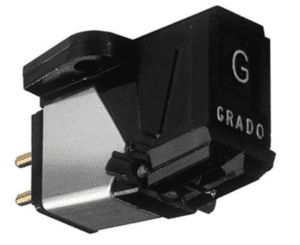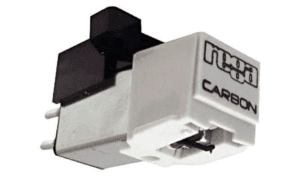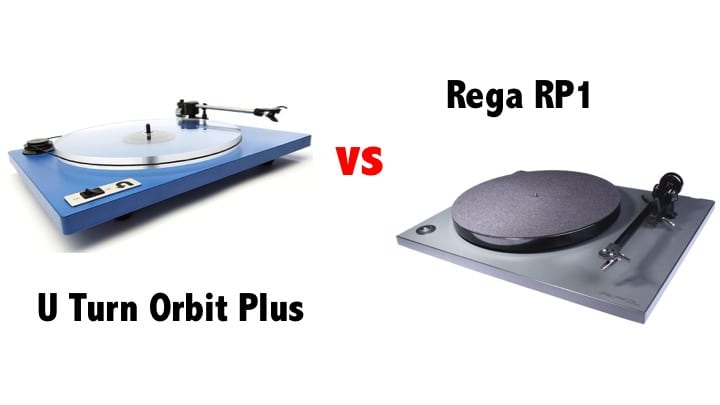Choosing between the Brands
Rega caters to different markets as it has a greater assortment of entry-level and high-end turntables. Since 1973, Rega has released multiple award-winning handmade cartridges, tonearms and turntables. Originally based in the UK, Rega is now a world-renowned brand with international suppliers.
In comparison, U-turn Audio only emerged in the vinyl turntable industry in 2012 and ships within just the USA and Canada. U-Turn Audio currently sells two complete, belt-driven turntable systems: The Orbit Basic and the Orbit Plus. U-turn Audio focuses on making its products affordable especially for vinyl novices and even the upgraded Orbit Plus costs just around $300.
Another unique element of the U-turn Audio brand is its customisation feature. Unlike Rega, customers can choose their turntable’s base colour, platter material, cartridge, and more. Best of all is its affordability as a custom-made U-turn Audio turntable typically costs from $220 to $450.
100% Manual and Belt-driven


The U-turn Orbit Plus and RP1 turntables are not two completely different animals.
- Both turntables are a 100% manual affair. A change between the two speeds, 33 and 45 RPM, needs to be manually done. At the end of a record, you also need to manually shift the tonearm back to its original position.
- Both turntables are belt-driven. By isolating the motor from the platter, there is less noise interference from the motor and this creates better sound quality.
- Some further argue that the U-turn Orbit Plus is one step ahead with its external belt drive which claims to eliminate motor noise and maintain speed consistency.
- However, the RP1 does not fall behind as it compensates with a high quality low-vibration motor.
Takes Less than 5 minutes to Set-up
In terms of the ease of setting up, both the Orbit Plus and RP1 are fast and easy to setup.
- The cartridges in the Orbit Plus and RP1 are pre-fitted which cuts down the initial setup time to under five minutes.
- For the Orbit Plus turntable, if you have a cue lever, it can be installed and removed by sliding it on or off the tonearm base. You will hear a small “click” when the cue lever is correctly installed.
- For the RP1 turntable, the ideal counterweight position is already marked on the arm. You need to insert the counterweight at the back of the tonearm.
Platter Material
Earlier models of the RP1 used a MDF platter. Whereas, the Orbit Plus turntable uses an acrylic platter which is traditionally preferred over the MDF platter.
- In comparison to the MDF platter, the acrylic platter in the U-turn Orbit Plus is denser and a full pound heavier.
- The added weight gives the platter more inertia, which results in better speed consistency. The acrylic platter has 0.125%“wow & flutter” compared to 0.175% for an MDF platter.
- The high density and low stiffness of the acrylic platter also minimises unwanted vibrations. This results in improved detail and clarity in playing.
On the other hand, it is important to note that the more recent models of the RP1 turntable have upgraded to a phenolic resin platter. When comparing RP1’s phenolic resin platter to the acrylic platter of the Orbit Plus, the difference in quality is hardly distinguishable.
- The RP1’s phenolic resin flywheel effect platter has excellent speed stability and consistency.
- The top surface of the RP1’s platter is textured, which reduces slippage between the platter and the felt mat.
Difference in Tonearms
The two products also use different tonearms. The tonearm in the U-turn Orbit Plus turntable features a new gimbal design and an improved anti-skate mechanism.
- The new gimbal design has less bearing friction. This allows the stylus to move more freely as it tracks the grooves in the record and produces less distortions.
- The tonearm used in the Orbit Plus also features an improved anti-skate mechanism which provides a small amount of outward force to counteract inward skating force.
- The new anti-skate mechanism allows the stylus to sit more precisely in the centre of the groove. It can even track tedious passages that contain large amplitudes such as trumpets and percussion.
In comparison, the RP1 turntable uses a hand-assembled Rega RB101 tonearm.
- The Rega RB101 tone arm offers maximum stiffness and a three-point mounting system.
- The RP1 has reliable design with an integrated headshell, magnetic anti-skating mechanism and a sturdy lift arm.
- Altogether, these component minimise cartridge vibrations and sound distortions.
In terms of tonearms, it is not immediately clear which tonearm outperforms the other. Thus, it is important to further compare the cartridges used in each turntable. The cartridge and tonearm combined can greatly affect the sound performance of a turntable.
What about the Cartridges?
 vs
vs 
Compared to the platter material, the cartridge has a much larger impact on playback quality. The Orbit Plus turntable is pre-fitted with a Grado Black1 Cartridge, while the RP1 turntable uses a Carbon MM Cartridge.
- For the Orbit Plus turntable, the Grado Black1 Cartridge shines in terms of its mid-range performance. The midrange is clear and detailed while the high frequencies are unwavering
- However, while the bass is still pleasant to the ear, it is noticeably less full in the U-turn Orbit Plus turntable.
- According to online reviews, a few users experienced sound distortions in the drums and vocals, especially in the inner grooves.
- In contrast, the RP1 does not disappoint in both the mid-range and bass. The bass is clean and tidy while producing a decent tonal structure through the mid-range.
- The Carbon MM Cartridge also produces a very decent bottom-octave performance.
Surprisingly, replacing a Grado Black Cartridge will cost much more than replacing a Carbon MM Cartridge. The Grado Black1 Cartridge costs around $120 to $163 each while the Carbon MM Cartridge retails at just $34.
Despite being pricier, the Grado Black1 Cartridge does not seem to outmatch the Carbon MM Cartridge in terms of performance.
The golden question: Which is Better?
Do you prefer the U-turn Orbit Plus turntable
When comparing the price of the two turntables, the U-turn Orbit Plus turntable has a leg-up over the Rega RP1 turntable. The Rega RP1 model retails at $450 while the price of an Orbit Plus hovers around $300. In this regard, novice listeners on a budget may prefer purchasing the Orbit Plus turntable instead.
Do you prefer the Rega RP1 turntable
However, while the Orbit Plus is more affordable, it delivers a slightly lower punch in the sound department than the Rega RP1 turntable. The refined sound quality and high-end components of the RP1 turntable is something that novice vinyl listeners and the more experienced audiophiles can appreciate.
Overall, while the Orbit Plus has immense potential, it does not yet outperform the RP1. U-turn Audio still has some ways to go in achieving supreme sound quality.

